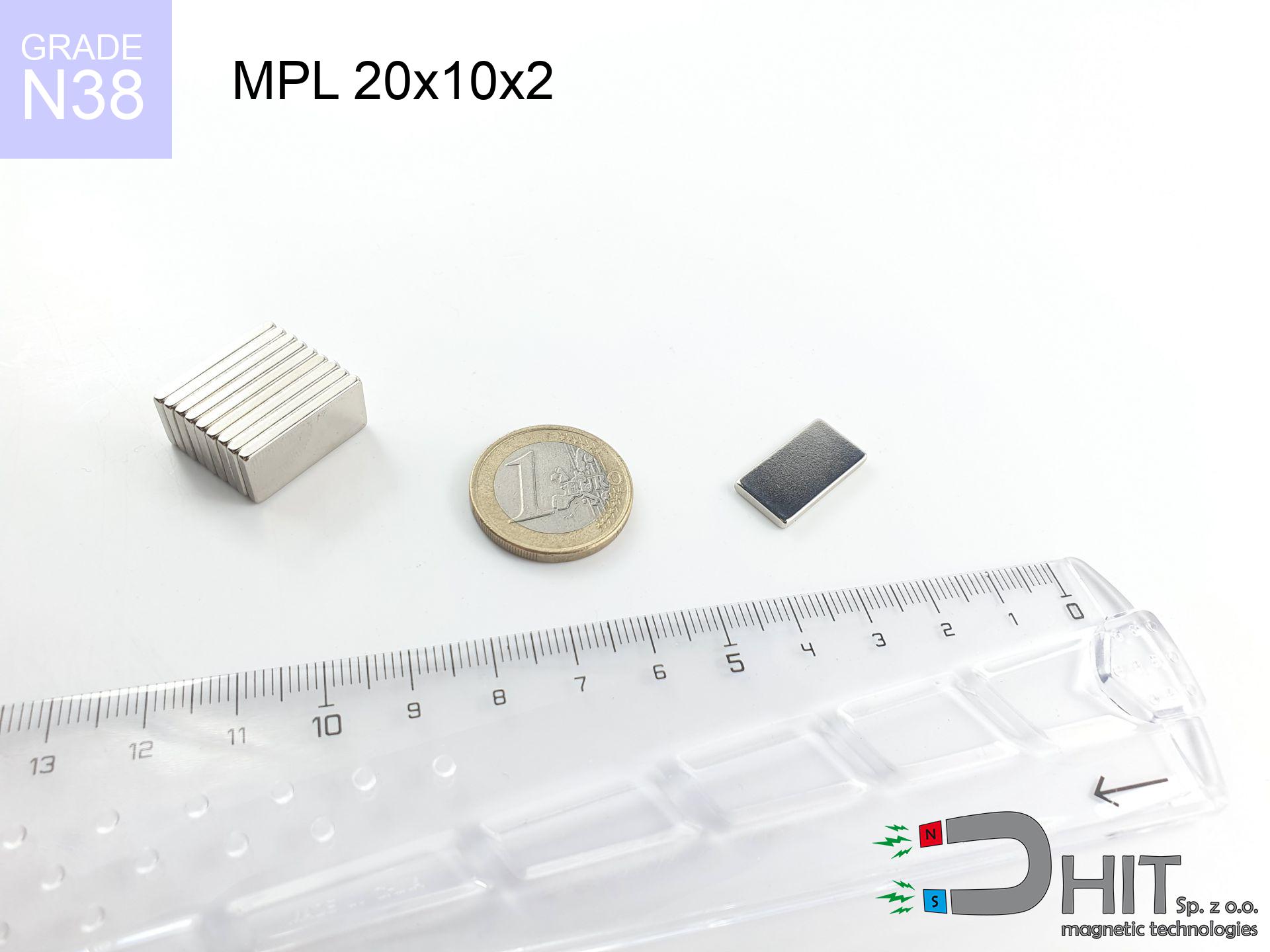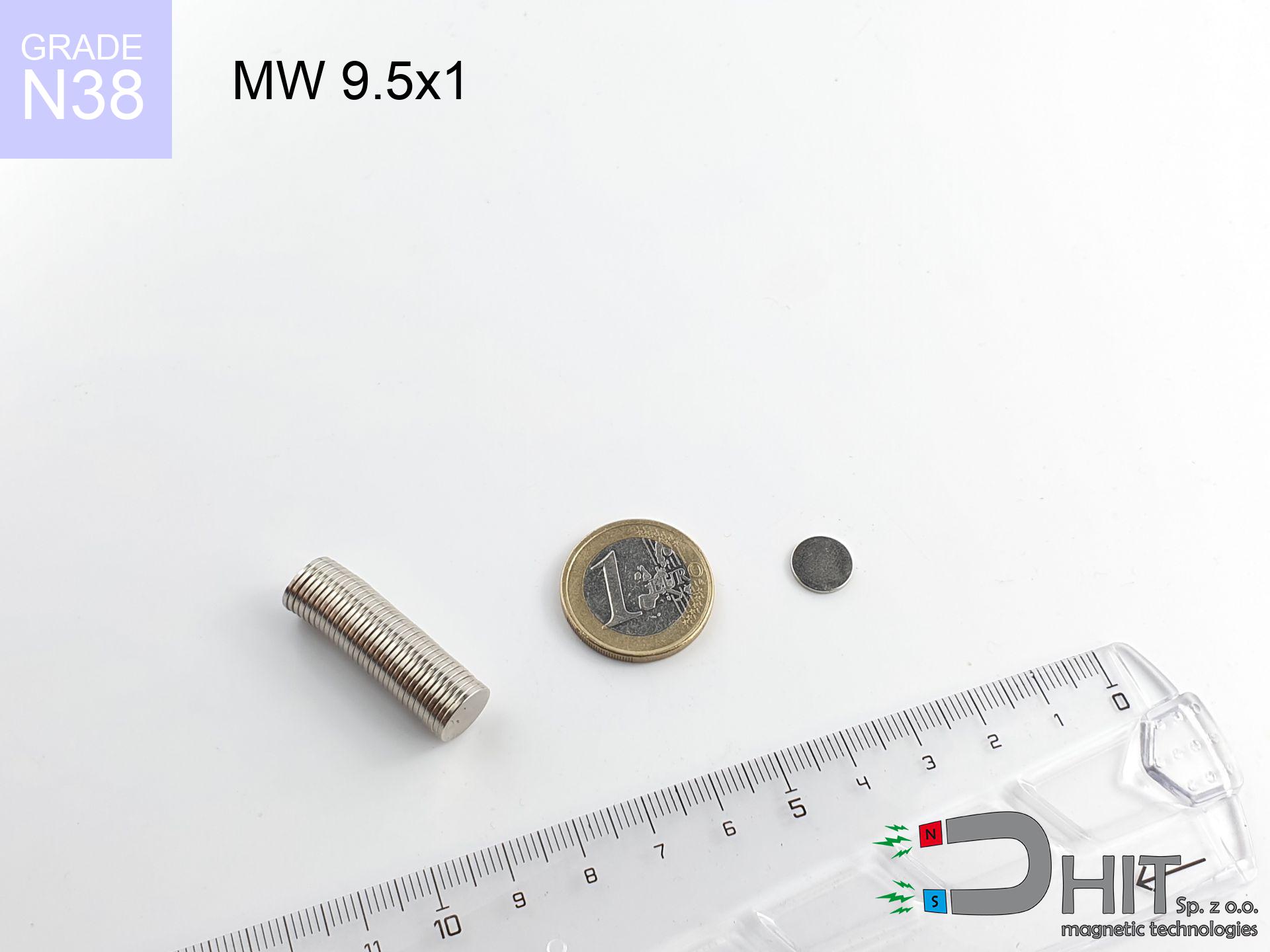HH 16x5.3 [M3] / N38 - through hole magnetic holder
through hole magnetic holder
Catalog no 370480
GTIN/EAN: 5906301814900
Diameter Ø
16 mm [±1 mm]
Height
5.3 mm [±1 mm]
Weight
6.4 g
Magnetization Direction
↑ axial
Load capacity
4.00 kg / 39.23 N
Coating
[NiCuNi] Nickel
3.32 ZŁ with VAT / pcs + price for transport
2.70 ZŁ net + 23% VAT / pcs
bulk discounts:
Need more?
Give us a call
+48 888 99 98 98
alternatively contact us using
contact form
through our site.
Specifications along with appearance of magnets can be reviewed using our
magnetic calculator.
Same-day shipping for orders placed before 14:00.
Detailed specification - HH 16x5.3 [M3] / N38 - through hole magnetic holder
Specification / characteristics - HH 16x5.3 [M3] / N38 - through hole magnetic holder
| properties | values |
|---|---|
| Cat. no. | 370480 |
| GTIN/EAN | 5906301814900 |
| Production/Distribution | Dhit sp. z o.o. |
| Country of origin | Poland / China / Germany |
| Customs code | 85059029 |
| Diameter Ø | 16 mm [±1 mm] |
| Height | 5.3 mm [±1 mm] |
| Weight | 6.4 g |
| Magnetization Direction | ↑ axial |
| Load capacity ~ ? | 4.00 kg / 39.23 N |
| Coating | [NiCuNi] Nickel |
| Manufacturing Tolerance | ±1 mm |
Magnetic properties of material N38
| properties | values | units |
|---|---|---|
| remenance Br [min. - max.] ? | 12.2-12.6 | kGs |
| remenance Br [min. - max.] ? | 1220-1260 | mT |
| coercivity bHc ? | 10.8-11.5 | kOe |
| coercivity bHc ? | 860-915 | kA/m |
| actual internal force iHc | ≥ 12 | kOe |
| actual internal force iHc | ≥ 955 | kA/m |
| energy density [min. - max.] ? | 36-38 | BH max MGOe |
| energy density [min. - max.] ? | 287-303 | BH max KJ/m |
| max. temperature ? | ≤ 80 | °C |
Physical properties of sintered neodymium magnets Nd2Fe14B at 20°C
| properties | values | units |
|---|---|---|
| Vickers hardness | ≥550 | Hv |
| Density | ≥7.4 | g/cm3 |
| Curie Temperature TC | 312 - 380 | °C |
| Curie Temperature TF | 593 - 716 | °F |
| Specific resistance | 150 | μΩ⋅cm |
| Bending strength | 250 | MPa |
| Compressive strength | 1000~1100 | MPa |
| Thermal expansion parallel (∥) to orientation (M) | (3-4) x 10-6 | °C-1 |
| Thermal expansion perpendicular (⊥) to orientation (M) | -(1-3) x 10-6 | °C-1 |
| Young's modulus | 1.7 x 104 | kg/mm² |
Chemical composition
| iron (Fe) | 64% – 68% |
| neodymium (Nd) | 29% – 32% |
| boron (B) | 1.1% – 1.2% |
| dysprosium (Dy) | 0.5% – 2.0% |
| coating (Ni-Cu-Ni) | < 0.05% |
Ecology and recycling (GPSR)
| recyclability (EoL) | 100% |
| recycled raw materials | ~10% (pre-cons) |
| carbon footprint | low / zredukowany |
| waste code (EWC) | 16 02 16 |
See also deals
Advantages as well as disadvantages of neodymium magnets.
Strengths
- Their power is maintained, and after approximately 10 years it drops only by ~1% (according to research),
- Neodymium magnets remain remarkably resistant to loss of magnetic properties caused by external interference,
- Thanks to the shiny finish, the surface of nickel, gold-plated, or silver-plated gives an clean appearance,
- Neodymium magnets create maximum magnetic induction on a small area, which ensures high operational effectiveness,
- Through (adequate) combination of ingredients, they can achieve high thermal strength, allowing for functioning at temperatures approaching 230°C and above...
- Due to the possibility of precise molding and adaptation to unique requirements, NdFeB magnets can be produced in a broad palette of forms and dimensions, which amplifies use scope,
- Huge importance in modern technologies – they are utilized in magnetic memories, drive modules, precision medical tools, also technologically advanced constructions.
- Compactness – despite small sizes they provide effective action, making them ideal for precision applications
Disadvantages
- They are prone to damage upon heavy impacts. To avoid cracks, it is worth securing magnets using a steel holder. Such protection not only shields the magnet but also improves its resistance to damage
- Neodymium magnets decrease their force under the influence of heating. As soon as 80°C is exceeded, many of them start losing their power. Therefore, we recommend our special magnets marked [AH], which maintain durability even at temperatures up to 230°C
- When exposed to humidity, magnets start to rust. For applications outside, it is recommended to use protective magnets, such as magnets in rubber or plastics, which secure oxidation as well as corrosion.
- Due to limitations in realizing threads and complex shapes in magnets, we propose using a housing - magnetic mechanism.
- Health risk related to microscopic parts of magnets are risky, when accidentally swallowed, which is particularly important in the aspect of protecting the youngest. Furthermore, small components of these products can be problematic in diagnostics medical when they are in the body.
- Higher cost of purchase is one of the disadvantages compared to ceramic magnets, especially in budget applications
Holding force characteristics
Maximum lifting capacity of the magnet – what contributes to it?
- using a sheet made of low-carbon steel, serving as a circuit closing element
- whose thickness reaches at least 10 mm
- with a plane cleaned and smooth
- under conditions of ideal adhesion (metal-to-metal)
- under axial force direction (90-degree angle)
- at temperature room level
Determinants of practical lifting force of a magnet
- Air gap (between the magnet and the metal), because even a microscopic clearance (e.g. 0.5 mm) results in a reduction in lifting capacity by up to 50% (this also applies to varnish, rust or debris).
- Force direction – remember that the magnet holds strongest perpendicularly. Under sliding down, the holding force drops significantly, often to levels of 20-30% of the nominal value.
- Wall thickness – the thinner the sheet, the weaker the hold. Part of the magnetic field penetrates through instead of generating force.
- Steel grade – ideal substrate is high-permeability steel. Hardened steels may generate lower lifting capacity.
- Plate texture – smooth surfaces guarantee perfect abutment, which improves force. Uneven metal reduce efficiency.
- Operating temperature – NdFeB sinters have a sensitivity to temperature. When it is hot they are weaker, and in frost gain strength (up to a certain limit).
Lifting capacity testing was carried out on a smooth plate of suitable thickness, under a perpendicular pulling force, whereas under parallel forces the load capacity is reduced by as much as fivefold. Moreover, even a slight gap between the magnet and the plate lowers the lifting capacity.
Safe handling of NdFeB magnets
Physical harm
Danger of trauma: The attraction force is so great that it can result in hematomas, crushing, and even bone fractures. Use thick gloves.
Fragile material
Protect your eyes. Magnets can explode upon violent connection, ejecting shards into the air. We recommend safety glasses.
Powerful field
Use magnets consciously. Their powerful strength can surprise even experienced users. Plan your moves and do not underestimate their power.
Skin irritation risks
Certain individuals have a sensitization to nickel, which is the typical protective layer for neodymium magnets. Extended handling can result in an allergic reaction. It is best to use safety gloves.
Danger to the youngest
Product intended for adults. Small elements pose a choking risk, causing serious injuries. Store away from children and animals.
Thermal limits
Standard neodymium magnets (grade N) undergo demagnetization when the temperature exceeds 80°C. The loss of strength is permanent.
Compass and GPS
A strong magnetic field disrupts the functioning of compasses in smartphones and GPS navigation. Maintain magnets near a smartphone to prevent damaging the sensors.
Electronic hazard
Equipment safety: Strong magnets can ruin payment cards and delicate electronics (pacemakers, hearing aids, mechanical watches).
Health Danger
Individuals with a ICD should maintain an absolute distance from magnets. The magnetism can disrupt the operation of the life-saving device.
Machining danger
Machining of NdFeB material poses a fire risk. Neodymium dust oxidizes rapidly with oxygen and is difficult to extinguish.

![Magnet with hole HH 16x5.3 [M3] / N38 Magnet with hole HH 16x5.3 [M3] / N38](https://cdn3.dhit.pl/graphics/banners/magnet.webp)
![HH 16x5.3 [M3] / N38 - through hole magnetic holder](https://cdn3.dhit.pl/graphics/products/hh-16x5.3-m3-sud.jpg)





